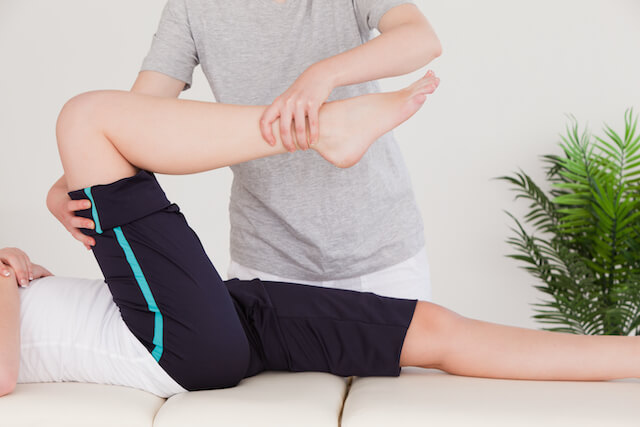Common Knee Conditions and How PT Can Help

In general, knee pain and common knee conditions occur due to muscular imbalances, how well your kneecap moves and abnormal kneecap tracking.
Two common knee conditions are ACL tears and subsequent repairs as well as quad tendon tears and subsequent repairs.
WHAT IS THE ACL?
The ACL is made up of dense fibrous connective tissue that supports the front of the knee joint. It connects your upper leg bone to your lower leg bone, providing strength between your knee joint. Without an intact ACL, your knee will feel unsteady or unstable and you will likely have difficulty pivoting and performing direction changes as a result of the joint’s instability. You will also note increased knee pain associated with an ACL tear preventing you from participating in your sport. ACL tears are actually three to four times more likely to occur in females. BUT, the good news is that females can reduce the risk for ACL tears by up to 80 percent with sports-specific and injury prevention training.
HOW COMMON ARE ACL TEARS?
According to a recent study published by the National Institutes of Health, there are approximately 200,000 ACL-related injuries sustained in the United States alone each year. Of those, half of the injuries required surgical intervention. Although 70 percent of ACL injuries occur while playing agility-type sports such as soccer, basketball and football, only 30 percent of those result from direct contact. Non-contact related injuries include over extension of the knee or rotation on a fully extended knee when weight bearing, which often occurs when landing from a jump with your knees locked or during quick direction changes and pivoting motions.
WHAT IS THE QUAD TENDON?
This tendon is what attaches the quadriceps muscles to the tibia.
Some symptoms of these two common knee injuries include:
- Many people hear or feel a ‘pop’ in their knee
- Swelling, bruising, tenderness
- Loss of range of motion
- Sagging of kneecap or indentation above kneecap due to a torn quad tendon
- Feeling of the knee ‘giving out’
- Inability to continue sports or recreational activities
- Sharp pain with weight-bearing and daily activities such as getting in and out of the car, driving, climbing stairs, squatting or getting up from a low chair
- Significant weakness
Common causes of ACL tear and quad tendon tears include:
- Muscular imbalances, particularly with quad dominance (overuse of quads), weakness in the glutes, hamstrings and supporting musculature that provide additional stability such as hip rotators, abductors and adductors
- Chronic tendonitis
- Trauma or a direct blow to the knee
- Pivoting with your foot firmly planted, which causes a lot of torque on the knee
- Sudden deceleration or sudden cutting/change of direction
- Landing from a jump incorrectly
If these injuries are not addressed properly, you will have loss of function and ability to play sports or perform your regular daily activities such as getting in and out of a car and using stairs. The instability in your knee will continue to get worse and your you knee will continue giving out.
Physical therapy can help reduce swelling so that you can start increasing your mobility. Strength training for these injuries is specific to each individual based on the severity of their injury. However, a comprehensive rehabilitation approach is the most effective form of therapy. An ACL tear or a quad tendon repair doesn’t have to be a career-ending injury with proper treatment. Enhancing mobility through hands-on physical therapy and targeting specific muscle groups to improve hip, knee and ankle stability will increase your chances of returning to your regular activities with little to no discomfort.
By Dr. Billy Beaudreau, PT, DPT, MTC, OCS, FAAOMPT
